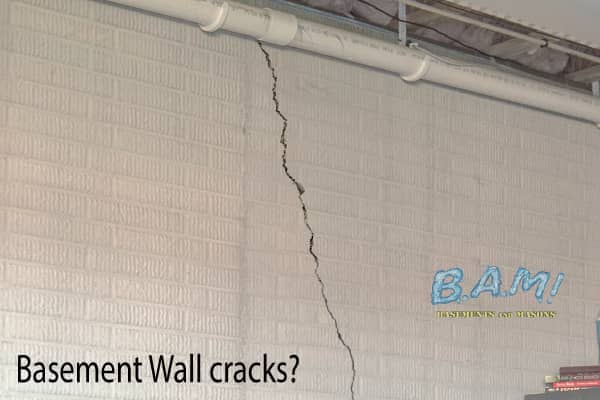Little Known Facts About Best Basement Waterproofing.
Little Known Facts About Best Basement Waterproofing.
Blog Article
A Biased View of Best Basement Waterproofing
Table of ContentsFascination About Best Basement WaterproofingThe 5-Minute Rule for Best Basement WaterproofingThe Single Strategy To Use For Best Basement WaterproofingFacts About Best Basement Waterproofing UncoveredThe Of Best Basement Waterproofing
usages excavation methods towards the bottom of the structure's structure. involves eliminating moisture after it has gotten in the cellar. AdvantaClean's skilled experts and technicians will situate the water resource. If wall surface or slab cracks are present, we will inject polyurethane and epoxies right into the cracks and secure the concession, preventing more wetness from entering.
If there's condensation on the outside of the aluminum foil, you have high humidity in your basement. Repair it with a mobile room dehumidifier or a whole-house humidifier system rather than waterproofing products. If the foil has condensation on the within surface area (alongside the wall), the soil around your home may be normally damp from a high water table or poor dirt water drainage.
You can waterproof simply your indoor walls, which may solve the trouble. Once they dry, they stick completely to concrete and masonry wall surfaces.
Best Basement Waterproofing Things To Know Before You Buy
Concrete water resistant finishings can not be applied to formerly painted surfaces; inspect the label. Known as densifiers, they are suitable just for walls that haven't been painted or sealed.
Yet you brush, roll, or spray it on a lot more thickly one gallon covers just 75 square feet, not the 300 square feet normal with conventional paint. Water resistant paint is great for DIY application. You can use it over repainted surfaces, and paint over it once it's healed (one gallon prices $37).
It can cost $10,000 to $15,000, depending on the work required. Outside waterproofing includes digging deep into all over your house to the full deepness of the structure wall surfaces, after that installing a water resistant covering or membrane layer covered by water drainage panels. The panels give a simple path for water to move down to an exterior French drain at the base of your foundation.
We have actually all been caught in a tornado without any umbrella or raincoat (Best Basement Waterproofing). And it's always a recipe for calamity: everything's damp, your coiffure is messed up, and points are getting musty. A basement without waterproofing is sort of like that. Minus the wrecked hairstyle component. Your basement doesn't wish to experience a rainstorm without appropriate protection just as high as you don't desire to.
The 9-Second Trick For Best Basement Waterproofing
If you have actually done your study, you 'd recognize there are 2 kinds of waterproofing: interior and outside. It can obtain confusing what they both mean, which one's a much better investment, and what will actually keep the water out. Don't worry, we put together this blog to easily define both methods for you visit the site and talk about the advantages and disadvantages of each.
Exterior waterproofing is a waterproofing technique that entails securing your home from the outside. It's sort of like a moat around a castle. It entails digging a trench around your whole home down to the foundation (concerning 8 to 10 feet down). The structure wall surfaces are then cleaned, secured, and covered with a waterproof membrane layer or sealer.
How Best Basement Waterproofing can Save You Time, Stress, and Money.
It's a much more involved process that have a peek at this website calls for excavating up your lawn, which is expensive and lengthy. Exterior waterproofing entails removing every little thing bordering your home, consisting of verandas, driveways, walkways, landscaping, a/c devices, decks, and so on. If any of the work was done improperly and water is still entering your cellar, there isn't much you can do to fix or repair it.
Interior basement waterproofing involves waterproofing from the inside. Any type of water that leaks right into your cellar is redirected prior to it touches your floor. It's kind of like using a raincoat official source under your clothes. It entails two things: a water drain track and a sump pump. It functions by securing the within your cellar wall surfaces and floorings so water that attempts to go into is transported out via a sump pump.
It's an efficient technique to water-proof your basement. The drawback of interior basement waterproofing mostly has to do with the installation procedure.
Examine This Report about Best Basement Waterproofing
To conclude, outside and indoor basement waterproofing are both reliable approaches of securing your home from water damage. Outside waterproofing develops a barrier that prevents water from entering your home, while indoor waterproofing redirects water that does enter your home. And it is necessary to keep in mind that outside waterproofing is a pricey and turbulent installation procedure when compared to interior waterproofing.
Whichever method you pick, make sure you choose a trustworthy and trustworthy service provider for the work. If you have any type of questions concerning basement waterproofing, please get to out to us.
You can complete our form below, begin a conversation in the lower right-hand edge, or call us at 1-800-827-0702.
Report this page